Country Area 83.75 km2 Population 189,991 (2011) | Province Groningen Mayor Peter den Oudsten (PvdA) | |
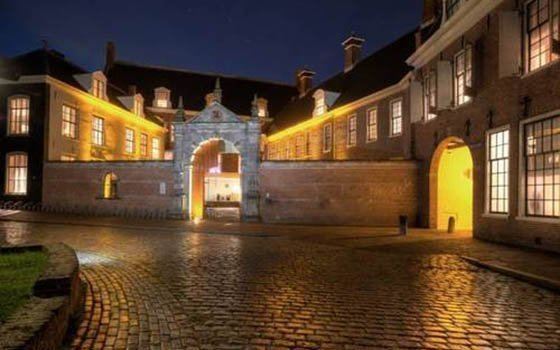 | ||
Points of interest Martinitoren, Groninger Museum, Noorderzon Performing Arts Festival Groningen, Noorderplantsoen, Martinikerk Colleges and Universities University of Groningen (Groningen), Hanze University of Applied Sciences (Groningen), International Business School - Hanze University Groningen (Groningen) | ||
Map of Groningen
Groningen ( [ˈɣroːnɪŋə(n)]; Gronings: Grunnen) is the main municipality as well as the capital city of the eponymous province in the Netherlands. With a population of 202,567 as of 2017, it is the largest city in the north of the Netherlands. An old city, Groningen was the regional power of the northern Netherlands, a semi-independent city-state and member of the German Hanseatic League. Groningen is a university city: it houses the University of Groningen (with about 30,000 students) and the Hanze University of Applied Sciences (with about 25,000 students).
Contents
- Map of Groningen
- Tourist attractions in groningen netherlands
- Visit to groningen poetry soul food event
- History
- University of Groningen
- Art culture and nightlife
- Museums
- Theatre and music
- Nightlife
- Other
- International relations
- Politics
- Religion
- Economy
- Cycling and walking
- Rail
- Road
- Bus
- Air
- Climate
- Sports clubs
- Cycling
- early times to 1750
- 1750 to 1870
- 1870 to 1900
- 1900 to 1930
- 1930 to 1950
- 1950 to modern times
- Sport
- References
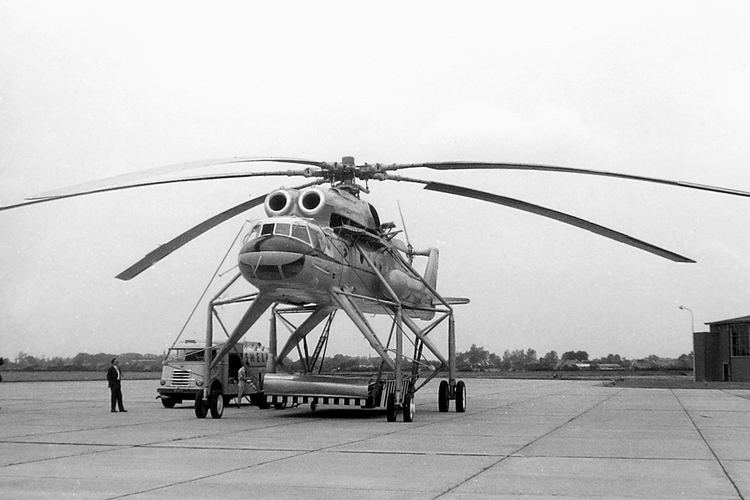
Tourist attractions in groningen netherlands
Visit to groningen poetry, soul & food event
History
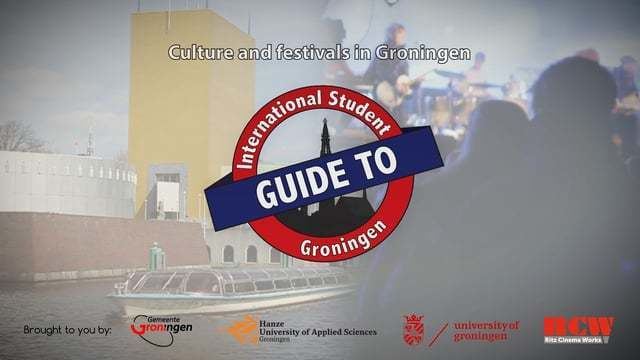
The city was founded on the northernmost point of the Hondsrug area. The oldest document referring to Groningen's existence dates from 1040. However, the city already existed long before then: the oldest archaeological traces found are believed to stem from the years 3950–3720 BC, although the first major settlement in Groningen has been traced back to the 3rd century AD.
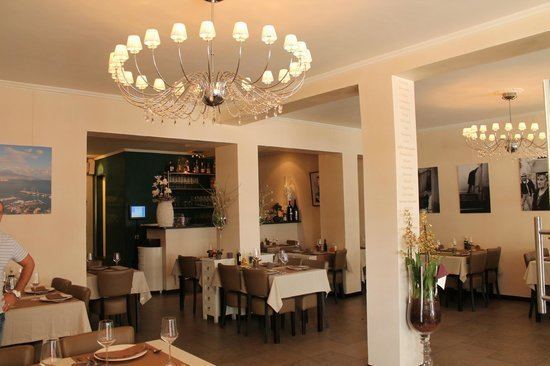
In the 13th century, when Groningen was an important trade centre, its inhabitants built a city wall to underline its authority. The city had a strong influence on the surrounding lands and made its dialect a common tongue. The most influential period of the city was the end of the 15th century, when the nearby province of Friesland was administered from Groningen. During these years, the Martinitoren was built, which loomed over the city (then) at 127 metres (417 feet) tall. The city's independence came to an end when in 1536, it chose to accept Emperor Charles V, the Habsburg ruler of the other Netherlands, as its overlord. Later, it joined the Republic of the Seven United Provinces.
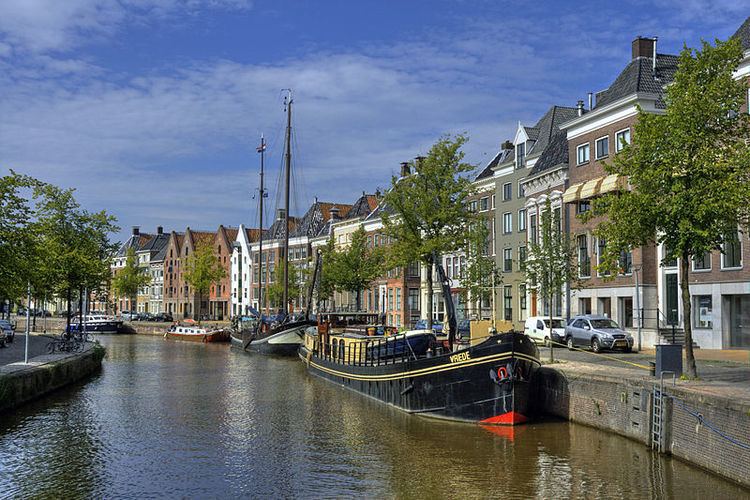
In 1614, the University of Groningen was founded, initially only for religious education. In the same period the city expanded rapidly and a new city wall was built. That same city wall was tested during the Third Anglo-Dutch War in 1672, when the city was attacked fiercely by the bishop of Münster, Bernhard von Galen. The city walls resisted, an event that is still celebrated with music and fireworks on August the 28th (as "Gronings Ontzet" or "Bommen Berend").
The city did not escape the devastation of World War II. In particular, the main square, the Grote Markt, was largely destroyed in April 1945 in the Battle of Groningen. However, the Martinitoren, its church, the Goudkantoor, and the city hall were not damaged. The battle lasted several days.
University of Groningen
The University of Groningen (in Dutch: Rijksuniversiteit Groningen) has a rich academic tradition that dates back to 1614. After the University of Leiden, it is the second oldest Dutch university. The university educated the first female student, Aletta Jacobs, the first Dutch national astronaut, Wubbo Ockels, the first president of the European Central Bank, Wim Duisenberg and two Nobel prize winners, Heike Kamerlingh Onnes and Ben Feringa. 200,000 people were either students, teachers or researchers at the university. Groningen has the highest percentage of students by total population, approximately 25 percent.
Art, culture and nightlife
The city is nationally known as the "Metropolis of the North" and as "Martinistad" referring to the tower of the Martinitoren, named after its patron saint Martin of Tours.
Although Groningen is not a very large city, it does have an important role as the main urban centre of this part of the country, particularly in the fields of music and other arts, education, and business. The large number of students living in Groningen also contributes to a diverse cultural scene for a city of its size.
Museums
The most important and most famous museum in Groningen is the Groninger Museum. With the construction of its current building, designed by Alessandro Mendini, the museum has been transformed into one of the most modern and innovative of its kind in the Netherlands. In addition, the city has a maritime museum, a university museum, a comics museum and a graphics museum. Groningen is also home of Noorderlicht, an international photographic platform that runs a photo gallery and organizes an international photo festival.
Theatre and music
Groningen has a city theatre (Stadsschouwburg), located on the Turfsingel; a big theatre and concert venue called Martini Plaza; and another major cultural venue on the Trompsingel, called the Oosterpoort. Vera is located on the Oosterstraat, the Grand Theatre on the Grote Markt, and Simplon on the Boterdiep. Several cafés feature live music, a few of which specialize in jazz music, including Jazzcafe De Spieghel on the Peperstraat. The jazz music students from the Prince Claus Conservatoire have been known to hold regular jam sessions in cafés such as Peter Pan on the Voor Het Voormalige Klein Poortje and café De Smederij on the Tuinstraat 2–4. Groningen is also the host city for Eurosonic Noorderslag, an annual music showcase event for over a hundred bands from all over Europe.
Nightlife
Groningen's nightlife depends largely on its student population. Its cultural scene is vibrant and remarkable for a city its size. In particular, the Grote Markt, the Vismarkt, the Poelestraat and Peperstraat are crowded every night of the week, and most bars do not close until 5 in the morning. Between 2005 and 2007, Groningen was elected "best city centre" of the Netherlands. Groningen has a red-light district, called Nieuwstad. A second one in the A-kwartier (an area) has been closed as of late 2015. Both areas are in or near the city centre.
Other
In 2014 a 3D Dome theatre, known as Infoversum, opened in Groningen. This is housed in an unusual dome shaped building made out of steel. It shows special dome films and also presents performing arts events. The Infoversum went bankrupt in 2015. It has since been bought by an independent company and transformed into a restaurant.
International relations
Groningen is twinned with the following cities:
Politics
The city council has 39 members. With 9 seats, the social-liberal D66 is the largest party on the council. The social-democratic PvdA has 6 seats, as does the Socialist Party. The centre-right VVD has 3 seats. GroenLinks holds 4 seats, and the local party Stadspartij 2 seats. The CDA and ChristenUnie are represented by 3 and 2 councilors, respectively. The Students and City (Student en Stad) holds 2 seats, and the Party for the Animals and 100% Groningen both hold one seat.
Religion
The largest religion in Groningen is Christianity with 25,1% of the population that is Christian.
Economy
Until recently, two large sugar refineries were inside the city boundaries. The Suiker Unie plant was originally outside Groningen, but it was completely swallowed by the expansion of the city. After a campaign to close the factory, it was finally shut down in 2008/2009. Before closing down, the sugar production amounted to 250,000 tonnes of beet sugar, with 250 employees (2005 figures). The only remaining sugar factory is CSM Vierverlaten in Hoogkerk, which produces 235,000 tonnes of beet sugar, with 283 employees.
Nowadays, well known companies from Groningen are a publishing company Noordhoff Uitgevers, a tobacco company Royal Theodorus Niemeyer, a health insurance company Menzis, a distillery Hooghoudt and the natural gas companies GasUnie and GasTerra. There is an increased focus on business services; specifically ICT, Life Sciences, Tourism, Energy and Environment.
Moreover, the Hotel and Catering Industry form a significant part of the economy of Groningen.
Cycling and walking
Groningen has been called the "World Cycling City" because 57% of journeys within the city are made by bicycle. Like most Dutch cities, Groningen is well adapted to the high number of cyclists. A large network of bike paths makes it convenient to cycle to various destinations and within the town the bike is the most popular means of transportation. In 2000, Groningen was chosen as Fietsstad 2002 — top BikeCity of the Netherlands for 2002.
The city is very much adapted to the wishes of those who want to get around without a car, as it has an extensive network of segregated cycle-paths, good public transport, and a large pedestrianised zone in the city centre. The transformation of the historic centre into a pedestrian priority zone enables and invites walking and biking by making these active modes of transport comfortable, safe and enjoyable.
These attributes are accomplished by applying the principle of "filtered permeability". It means that the network configuration favours active transportation and selectively "filters out" the car by reducing the number of streets that run through the centre. While certain streets are discontinuous for cars, they connect to a network of pedestrian and bike paths which permeate the entire centre. In addition, these paths go through public squares and open spaces, increasing the enjoyment of the trip (see image). The logic of filtering a mode of transport is fully expressed in a comprehensive model for laying out neighbourhoods and districts – the Fused Grid. In the Italian TV programme of investigative journalism "Report" appeared a short film, considering the use of bikes in Groningen a good practice to emulate in Italy.
Rail
There are three stations in Groningen:
The main train station (served by the Nederlandse Spoorwegen and Arriva) has regular services to most of the major cities in the Netherlands.
The following services operated by the Nederlandse Spoorwegen call at Groningen:
The following services operated by Arriva call at Groningen:
As of 2017, the hourly train to Leer only runs to Weener due to a damaged rail bridge. Travellers can either take the bi-hourly direct bus connection from Groningen to Leer, or change to a local bus at Weener.
Road
The A28 motorway connects the city of Groningen to Utrecht (via Zwolle and Amersfoort). The A7 motorway connects Groningen to Friesland and Amsterdam (South-West) and Winschoten and the direction of Bremen in the East.
Bus
Qbuzz runs several city buses and regional buses. The main routes are:
There are also direct buses between Groningen and Bremen, Hamburg and Berlin in Germany, run by Flixbus and between Groningen and Munich run by ADAC Postbus.
Groningen planned to build a tram route connecting the main station, via the university hospital with the university complex (Zernike), and the central station via the city center with the Park & Ride and sportscenter at Kardinge . However, in October 2012 the city council decided not to build the tramlines due to the high costs.
Air
Groningen Airport Eelde is located 10 kilometres (6 miles) south of the centre of Groningen, with scheduled services to Gdansk, Copenhagen, and London Southend, and several seasonal holiday charter services to other European destinations.
Climate
Groningen has an oceanic temperate climate, like all of the Netherlands, although slightly colder in winter than other major cities in the Netherlands due to its northeasterly position. Weather is influenced by the North Sea to the north-west and its prevailing north-western winds and gales. Winter temperatures are cool: on average above freezing, although frosts are common during spells of easterly winds blowing in from the inner European continent, i. e., Germany, Russia and even Siberia. Night-time temperatures of −10 °C (14 °F) or lower are not uncommon during cold winter periods. The lowest temperature ever recorded is −26.8 °C (−16.2 °F) on February 16, 1956. Snow often falls, but rarely stays long due to warmer daytime temperatures, although white snowy days happen every winter. Summers are somewhat warm and humid. Temperatures of 30 °C (86 °F) or higher occur sporadically, most average daytime highs are around 22 °C (72 °F). Very rainy periods are common, especially in spring and summer. Average annual precipitation is about 800 mm (31 in). Sunshine hours vary, but are usually below 1600 hours, giving much cloud cover similar to most of the Netherlands. Climate in this area has mild differences between highs and lows, and there is adequate rainfall year-round. The Köppen Climate Classification subtype for this climate is "Cfb". (Marine West Coast Climate/Oceanic climate).
Sports clubs
The local football club is FC Groningen, founded in 1971. Currently it is playing in the Dutch top football league, called the Eredivisie. Winners of the KNVB cup in 2014/15, their best league result was in the Eredivisie during the 1990/91 season when they finished third. The current stadium of FC Groningen, which opened in January 2006, is called Noordlease stadium (before the 2015-2016 season it was called the Euroborg stadium) and has 22,550 seats. There are plans to expand the stadium to a capacity of 35- or 40,000.
Donar is a professional basketball club, playing in the Dutch Basketball League. The home arena is Martiniplaza. The club won the national championship five times: in 1982, 2004, 2010, 2014 and 2016. In 2005, 2011 and 2014 they won the NBB Cup.
Each year, the second Sunday of October, the 4 Mile of Groningen takes place. This is one of the biggest running events of the Netherlands; in the year 2013, there were places for 21,000 participants: this was 1000 more than in 2012, when there were 20,000 starting spots.
Also the sport American Football is represented in the city of Groningen, which is at the highest level in the Netherlands. The Groningen Giants , founded in 2000, play their home games at Sportpark Corpus den Hoorn.
Cycling
The 2002 Giro d'Italia started in Groningen, including the prologue and the start of stage 1. The city also hosted the start and finish of stage 5 of the 2013 Energiewacht Tour.
